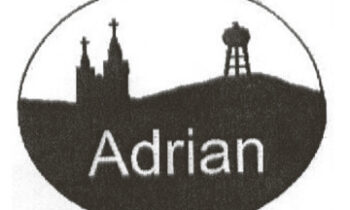By Carol Schreiber
Staff Writer
Darkness will arrive at about 1:00 p.m. next Monday, August 21, as the Great American Total Solar Eclipse will occur. The path of totality will be about 70 miles wide, and will reach from Oregon to South Carolina.
Space.com has an interactive map, which allows viewers to determine the percentage of eclipse that will be visible at locations throughout the United States. In southwestern Minnesota, the start of the partial eclipse will be at 11:30 a.m., with the maximum shortly after 1:00 p.m. The partial eclipse will end about 2:30 p.m.
In this area, the sun will be eclipsed about 90 percent at the maximum point of the eclipse. Anyone planning to view the eclipse should use solar viewing glasses. Sunglasses are not safe to use. Looking directly at the sun, even when it is partially covered by the moon, can cause serious eye damage or blindness.
According to Space.com, a total solar eclipse occurs when the disk of the moon appears to completely cover the disk of the sun in the sky. The fact that total solar eclipses occur at all is a quirk of cosmic geometry. The moon orbits an average of 239,000 miles from Earth, just the right distance to seem the same size in the sky as the much-larger sun. However, these heavenly bodies line up only about once every 18 months.
This is the first total solar eclipse visible in the United States since 1979. Two to five solar eclipses occur each year on average, but total solar eclipses happen just once every 18 months or so, and even more rarely over populated areas.
Since the shadow of the moon will move from west to east, the eclipse will begin in Oregon at 9:06 Pacific time. It will end in South Carolina after 4:00 p.m. eastern time.
The path of totality for the August 21 total solar eclipse stretches from Oregon to South Carolina. It passes through Idaho, Wyoming, Nebraska, Kansas, Missouri, Illinois, Kentucky, Tennessee, Georgia, North Carolina and South Carolina.
Many eclipse parties and organized events are taking place around the path of totality, and hotel rooms along the path are difficult if not impossible to find. About 12 million people live along the path, but it is estimated that the population may double on August 21.
Along the center of the 70 mile path, the totality of the eclipse will last about 2 minutes and 40 seconds. The edge of the path will observe totality for only a few seconds.
Total eclipse watchers report seeing great jets and ribbons of light, twisting and curling out into the sky. “It brings people to tears,” Rick Fienberg, a spokesperson for the American Astronomical Society (AAS), told Space.com of the experience. “It makes people’s jaw drop.”
During totality, the area inside the moon’s shadow is cloaked in twilight — a very strange feeling to experience in the middle of the day. Just before and just after totality, observers can see this cloak of darkness moving toward them across the landscape, and then moving away.
The unforgettable experience of a solar eclipse should not be viewed with the naked eye. Special eclipse glasses are available, or a pinhole projector or other projection technique can be used as a safe, indirect viewing of the sun’s image.
A NASA interactive eclipse map at Space.com shows exactly when totality will occur and how long it will last in the location where you plan to observe the eclipse. Just click on a spot on the map, and an informational box will appear with specific times. See below for selected local information.
If you don’t have solar safe glasses, a good way to see the eclipse is to project an image of the partially eclipsed sun. One easy method is to make a pinhole projector.
Take two pieces of cardboard or thick paper. Put a pinhole in one (taking care to make a small, neat hole). Then, stand with your back to the sun and let the Sun’s light fall through the hole and onto the other sheet. You’ll get a small but distinct image of the sun. (A way to get a sharper pinhole is to cut a square out of the middle of one piece of cardboard, tape a sheet of aluminum foil over the hole, and put the pinhole in the foil instead of the cardboard.) The farther apart the two pieces of cardboard or paper, the larger the image of the sun will be.
You can also make such a pinhole projector inside a box, such as a cereal box or a tube or poster shipping box. Again, the image of the eclipsed sun on the box will be quite small, but it will be distinct.
You can find instructions for
• a cereal box viewer at http://hilaroad.com/camp/projects/eclipse_viewer/eclipse_viewer.html; and
• a UPS triangular shipping box viewer at www.exploratorium.edu/eclipse/how.html.
Adrian
Percent Eclipsed: 90.49%
Start 11:38:56 AM
Maximum 1:02:46 PM
End 2:27:02 PM
Fulda
Percent Eclipsed: 89.33%
Start 11:39:34 AM
Maximum 1:03:13 PM
End 2:27:12 PM
Heron Lake
Percent Eclipsed: 89.27%
Start 11:40:03 AM
Maximum 1:03:48 PM
End 2:27:46 PM
Slayton
Percent Eclipsed: 89.09%
Start 11:39:19 AM
Maximum 1:02:51 PM
End 2:26:46 PM
Worthington
Percent Eclipsed: 90.14%
Start 11:39:31 AM
Maximum 1:03:24 PM
End 2:27:35 PM






